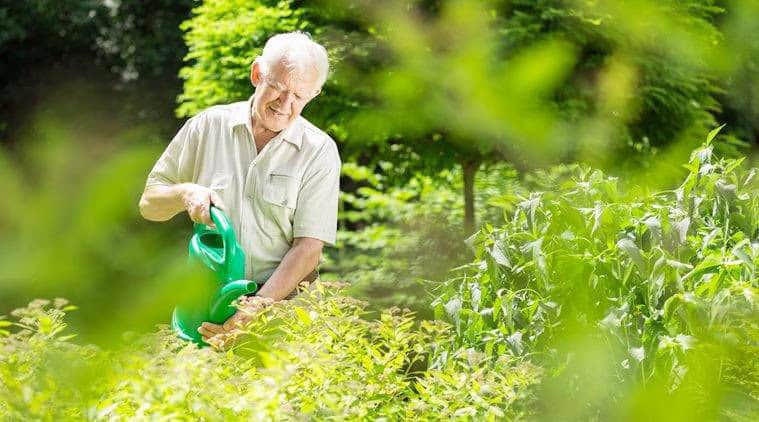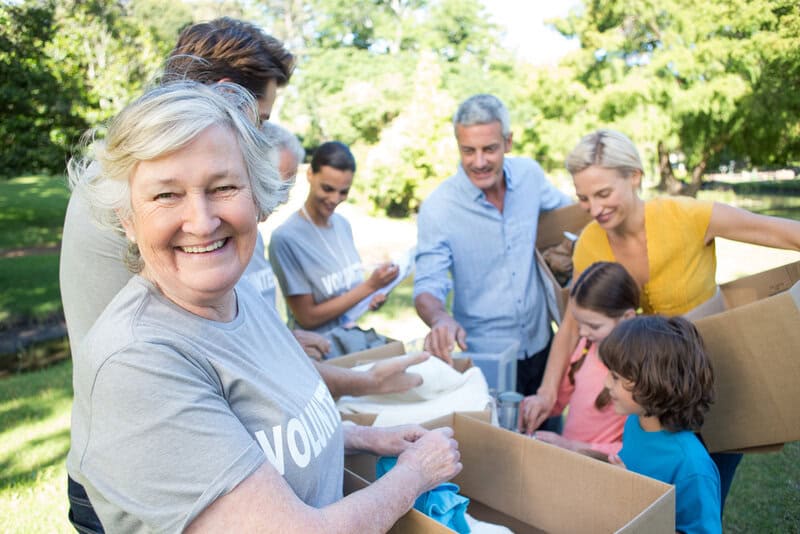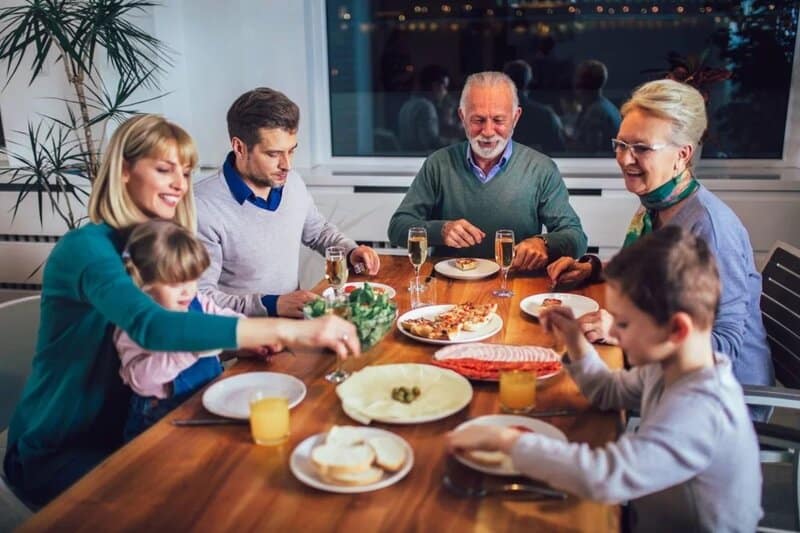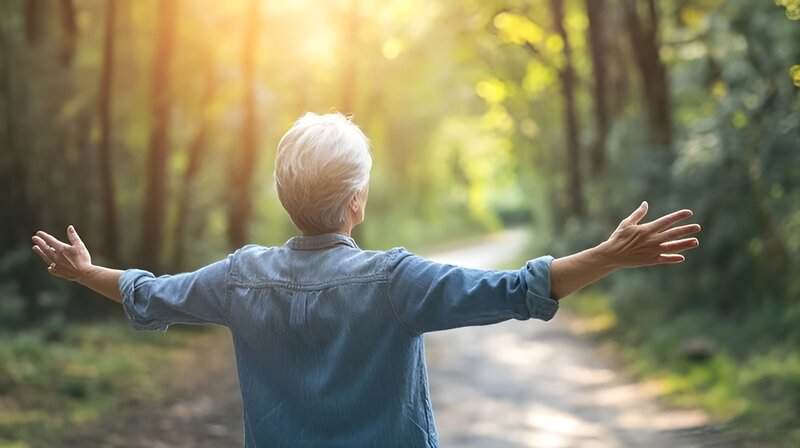When it comes to living a long and healthy life, few places capture our curiosity like the Blue Zones. These are regions of the world where people often live well into their 90s and even past 100. Their secret isn’t based on strict diets or the latest fitness trends. Instead, it comes from a collection of simple, everyday habits that are naturally built into their routines. These small and consistent actions support mental clarity, physical strength, and emotional well-being—often without being labeled as “wellness” at all. Here are 30 daily habits that help people in Blue Zones live longer, one natural step at a time.
Walk Almost Everywhere

People in Blue Zones walk as a natural part of their day. They stroll to visit friends, go to the market, or attend social gatherings. This consistent low-intensity movement supports cardiovascular health and muscle tone. Unlike gym sessions, walking is integrated into routines seamlessly. Their towns are built to be pedestrian-friendly. They aren’t counting steps or tracking miles. They simply move because life requires it. Walking isn’t fitness—it’s function.
Tend to a Garden

Gardening is both a physical and spiritual act in Blue Zones. Residents grow vegetables, herbs, and flowers with pride and purpose. The labor keeps bodies strong while the ritual calms the mind. Time outdoors means regular sunlight and fresh air. It also fosters a connection to nature and the food they eat. Gardeners report lower stress and higher satisfaction. Tending a plant reminds them of patience and care. For many, it’s a daily meditation.
Eat the Biggest Meal at Midday

In many Blue Zones, lunch is the main and most substantial meal of the day. It’s typically enjoyed with others and eaten slowly, allowing time for digestion and connection. This midday focus gives the body energy during peak activity hours and avoids heavy meals before bed. A lighter dinner in the evening helps support better sleep and metabolic function. Meals are often home-cooked and rich in vegetables, legumes, and whole grains. This routine reflects a natural circadian rhythm rather than dietary restriction. Instead of counting calories, they simply follow a rhythm that feels good and works.
Practice Portion Control

Rather than counting calories, they stop eating when about 80% full. This ancient practice, known as “Hara Hachi Bu” in Okinawa, prevents overeating. It takes advantage of the body’s natural satiety cues. Meals are smaller, yet deeply satisfying. Plates are never piled high, and food is respected. This helps maintain healthy body weight without dieting. They view food as fuel, not escape. Eating is an act of balance, not excess.
Prioritize Sleep

A full night’s rest is non-negotiable in these communities. People tend to rise and sleep with the sun, following natural circadian rhythms. There’s no glorification of hustle culture or burning the midnight oil. A good night’s sleep is seen as essential for energy, mental clarity, and immune support. Many also take short naps or rest periods in the afternoon to recharge. Bedrooms are often simple, quiet, and free of screens or artificial distractions. Sleep isn’t treated as a luxury or trend—it’s just a natural, respected part of life.
Sit Down for Meals with Family or Friends

Eating isn’t a solo or rushed activity in Blue Zones. People regularly enjoy meals with loved ones, turning eating into a communal experience. This habit fosters a deep sense of belonging and emotional security. Conversations around the table naturally reduce stress and encourage more mindful, slower eating. Meals become moments of connection, not just sustenance. This shared experience helps maintain strong social bonds and improves overall well-being. In these communities, food isn’t just nourishment—it’s togetherness.
Embrace Natural Light

Exposure to sunlight is a natural part of daily life in Blue Zones. People spend ample time outdoors while gardening, walking, or socializing. This regular exposure helps regulate circadian rhythms, which promotes better sleep and overall mood. Sunlight also boosts vitamin D levels, essential for bone and immune health. Instead of intentionally sunbathing, people simply live in a way that includes the outdoors. Homes often have plenty of windows and open-air spaces that let light in naturally. The sun isn’t a wellness tool—it’s just part of the background.
Have a Strong Sense of Purpose

In Okinawa, it’s called “ikigai”—your reason for getting up in the morning. In other Blue Zones, purpose is often tied to faith, family, or community involvement. It gives people a reason to stay engaged and active, even in older age. Having a sense of purpose fuels motivation, resilience, and overall life satisfaction. Studies show that individuals with a clear purpose live longer and experience lower rates of chronic disease. In these communities, purpose isn’t something to be found—it’s lived daily through simple, meaningful acts. It anchors people in something greater than themselves.
Drink Alcohol (in Moderation)

In several Blue Zones, daily moderate wine consumption is part of the culture. It’s typically enjoyed with meals and in the company of friends or family. This ritual promotes relaxation and strengthens social bonds. The emphasis is on quality, not quantity—usually just one or two small glasses. Alcohol is not used to cope, but to complement a joyful moment. Some studies suggest moderate red wine may offer heart health benefits. In these regions, drinking is about connection, not escapism.
Move Naturally Throughout the Day

People in Blue Zones don’t schedule workouts—they simply live in a way that keeps them moving. Daily chores like gardening, cooking, and walking provide consistent, low-impact physical activity. Their environments are designed to encourage natural movement, with few conveniences that eliminate effort. Instead of elevators, they take stairs; instead of power tools, they use hand tools. This organic form of exercise keeps muscles strong and joints flexible. Because movement is built into their lifestyle, it doesn’t feel like a burden. It’s exercise without the label.
Practice Faith or Spirituality

Most people in Blue Zones belong to a faith-based or spiritual community. Attending services, praying, or meditating provides structure and comfort. These practices create a sense of meaning and belonging. They also offer opportunities for reflection and emotional resilience. Many find strength and peace through their spiritual beliefs. It’s not about dogma—it’s about connection to something bigger than oneself. Faith is a quiet anchor in their daily lives.
Surround Themselves with Community

Isolation is rare in Blue Zones, where daily life revolves around strong social connections. People regularly interact with neighbors, friends, and family members. These consistent, face-to-face interactions create a deep sense of belonging. Social ties offer emotional support, reduce stress, and contribute to mental well-being. Community events, shared meals, and helping one another are part of the culture. There’s a collective mindset that values cooperation over competition. In these regions, relationships aren’t just important—they’re essential to longevity.
Care for Elders

Older adults aren’t sidelined—they’re honored and actively included in daily life. Grandparents often live with or near their families, maintaining strong intergenerational bonds. Their wisdom is valued, and they continue to contribute meaningfully to the household and community. This involvement gives elders a sense of purpose and dignity. It also benefits younger generations, who gain guidance and support. Rather than institutional care, aging is embraced as a natural part of the family structure. This deep respect for elders promotes emotional well-being across all ages.
Cook at Home Often

Home-cooked meals are a staple in Blue Zones. Recipes are usually simple, seasonal, and focused on whole foods. Cooking is often a shared experience that involves family or neighbors. This habit builds tradition, skill, and connection across generations. Meals made at home tend to be healthier and more balanced. Processed foods and takeout are rare indulgences, not daily norms. Preparing food is seen as a meaningful part of life, not a task to rush through.
Eat Mostly Plants

People in Blue Zones prioritize plant-based foods, with meat serving as a small complement rather than the main event. Meals are centered around beans, vegetables, grains, and legumes, which provide ample fiber, antioxidants, and essential nutrients. This plant-focused approach supports heart health, digestion, and longevity. Additionally, plant-based diets are more sustainable, both for personal health and the planet. These nutrient-rich foods help regulate weight, stabilize blood sugar, and keep energy levels consistent. Instead of focusing on what they can’t eat, Blue Zone residents emphasize the abundance of plant-based options available. For them, plants are the foundation of a long, healthy life.
Snack on Nuts or Fruits

Instead of reaching for energy bars or processed snacks, people in Blue Zones opt for whole, natural foods like nuts or fruits. These snacks are nutrient-dense, providing healthy fats, fiber, and vitamins. Almonds, walnuts, figs, and seasonal fruits are common choices. They stabilize blood sugar levels and help curb cravings, keeping people satisfied between meals. Snacking is not done mindlessly, but rather as a way to nourish the body without overindulging. These snacks are easy to access and are a far cry from calorie-heavy, processed options. It’s a simple, healthy habit that supports overall well-being.
Take Breaks Throughout the Day

Rather than pushing through fatigue, people in Blue Zones regularly take breaks. These moments of pause help reduce stress and re-energize. A quick rest or a chat with a neighbor can break up the day, preventing burnout. These small breaks are seen as essential for maintaining productivity and emotional balance. It’s a mindset that values quality over quantity, with the belief that rest is just as important as work. These pauses aren’t seen as indulgence but as necessary for long-term well-being. It’s a quiet but effective way to keep both body and mind in balance.
Avoid Over-Scheduling

In Blue Zones, being busy is not seen as a virtue. Their days are full, but not overwhelming, with a clear focus on priorities. There’s time for meals, work, rest, and socializing, with minimal rushing. People allow room for relaxation and spontaneous interactions, which fosters deeper connections. Multitasking is rare, as people prefer to give their full attention to one task at a time. This slower pace reduces stress and promotes mental clarity. By avoiding over-scheduling, they create space for living more intentionally and enjoying each moment.
Spend Time in Nature

Whether it’s the sea, a forest, or rolling hills, nature is woven into daily life. People in Blue Zones spend ample time outdoors, often foraging, farming, or simply socializing. This daily exposure to natural landscapes promotes calmness and connection to the earth. Nature has been shown to reduce stress, lower blood pressure, and boost mood. It also encourages physical activity like walking or gardening, which naturally supports health. In Blue Zones, nature isn’t a retreat or an occasional escape; it’s part of the daily routine. It’s a quiet form of wellness, integrated into their lives without ever needing a special label.
Laugh Often

Humor is abundant, often shared through storytelling and jokes. Laughter strengthens immune function and improves heart health. It also enhances connection with others, fostering a sense of community. In Blue Zones, life isn’t overly serious, and joy is easily found in everyday moments. People laugh together, not at others, creating an atmosphere of warmth. This shared joy reduces stress and promotes mental well-being. Laughter is not a scheduled activity—it’s simply a natural part of their lives.
Keep Things Simple

Clutter, both physical and mental, is rare in Blue Zones. People tend to live with less, prioritizing functionality over excess. Homes are typically modest, well-organized, and free from unnecessary distractions. This simplicity fosters a sense of calm and clarity, reducing stress and promoting well-being. A simpler life also allows more space for meaningful activities and relationships. With fewer choices to make, people experience less overwhelm. This easy, low-maintenance approach to life supports mental peace and long-term happiness.
Practice Gratitude

Whether through prayer, reflection, or casual conversation, gratitude is a daily habit in Blue Zones. People consistently acknowledge the good in their lives, no matter how small. This mindset helps shift focus away from stress and toward contentment. Practicing gratitude has been linked to better sleep, improved mental health, and stronger relationships. It’s not a formal exercise—it’s simply woven into their thoughts and words. By appreciating what they have instead of longing for more, they cultivate a deep sense of satisfaction. This quiet, consistent thankfulness supports emotional resilience and long-term happiness.
Maintain a Slow Pace

There’s no pressure to rush through the day in Blue Zones. People take their time with tasks, whether it’s cooking, walking, or chatting with a neighbor. This slower rhythm reduces stress and encourages mindfulness. Meals are eaten slowly, allowing for better digestion and conversation. The pace of life promotes presence rather than productivity. Instead of multitasking, they focus on one thing at a time. This unhurried lifestyle contributes to both mental clarity and emotional balance.
Drink Water, Not Soda

Water is the drink of choice in Blue Zones, often sourced fresh from local springs. It keeps the body hydrated, supports digestion, and helps regulate temperature. Unlike sugary sodas, water doesn’t spike blood sugar or contribute to weight gain. People drink it throughout the day without thinking twice. Herbal teas and coffee may be enjoyed, but rarely replace water as the main beverage. Sweetened drinks are reserved for special occasions, if consumed at all. Prioritizing water is a simple habit with powerful, lasting health benefits.
Foster Long-Term Friendships

Many friendships in Blue Zones span decades and are nurtured with care. These enduring relationships offer emotional support, companionship, and a deep sense of belonging. Regular interaction with trusted friends helps reduce stress and boost mood. Social ties are treated as essential to daily life, not optional extras. People make time to see each other face-to-face, often sharing meals or walking together. These friendships also promote accountability and healthy behaviors. They’re not just social—they’re part of the longevity equation.
Avoid Toxic Influences

People in Blue Zones are intentional about who and what they allow into their lives. Negative individuals, unhealthy habits, and divisive media are kept at a distance. Instead, they gravitate toward relationships and environments that nurture peace and positivity. Conflict is handled quickly and respectfully, preventing resentment from taking root. This creates emotionally safe spaces where people feel seen and supported. Boundaries are honored without drama or guilt. Emotional well-being is protected by simply choosing better company and letting the rest go.
Practice Mindfulness (Without Calling It That)

Daily tasks like kneading dough, sweeping the yard, or chopping vegetables are done with full attention. These activities naturally encourage presence and calm, even without formal meditation. People focus on what they’re doing rather than multitasking. This quiet concentration lowers stress and fosters emotional clarity. There’s no need for an app or guided session—it’s just how things are done. Life slows down, and awareness becomes part of the rhythm. Mindfulness is lived, not scheduled.
Avoid Screens After Dark

In Blue Zones, evenings are reserved for connection, rest, and reflection—not screen time. People spend their nights talking with family, playing games, or winding down with quiet activities. The absence of TVs and smartphones in bedrooms helps protect their sleep quality. Without the stimulation of screens, melatonin production isn’t disrupted. This leads to deeper, more restorative rest. Instead of binge-watching, they engage in meaningful, low-tech rituals. It’s a gentle way to close the day—and it works.
Dance, Sing, or Play Music

Music is a regular part of life in Blue Zones, woven into gatherings, celebrations, and daily routines. Whether it’s traditional folk songs, religious hymns, or impromptu dances, music brings joy and connection. People don’t need formal training to sing or play—it’s about expression, not perfection. Participating in music keeps the mind engaged and boosts emotional well-being. Dancing adds movement, laughter, and a sense of freedom. It also strengthens social bonds and lifts community spirit. These joyful practices nourish the soul as much as they energize the body.
Live Close to Loved Ones

In Blue Zones, families often live in close proximity to one another, fostering strong bonds across generations. It’s not uncommon for grandparents, parents, and children to reside together or within walking distance. This physical closeness encourages regular interaction and daily support, creating a deep sense of community. Childcare, eldercare, and other responsibilities are shared, reducing stress and enhancing family connections. Loneliness is rare, as there is always someone nearby to turn to for help or companionship. These tight-knit family structures contribute to both emotional and physical well-being. Living near loved ones strengthens the emotional foundation of life, providing a network of care and love.

